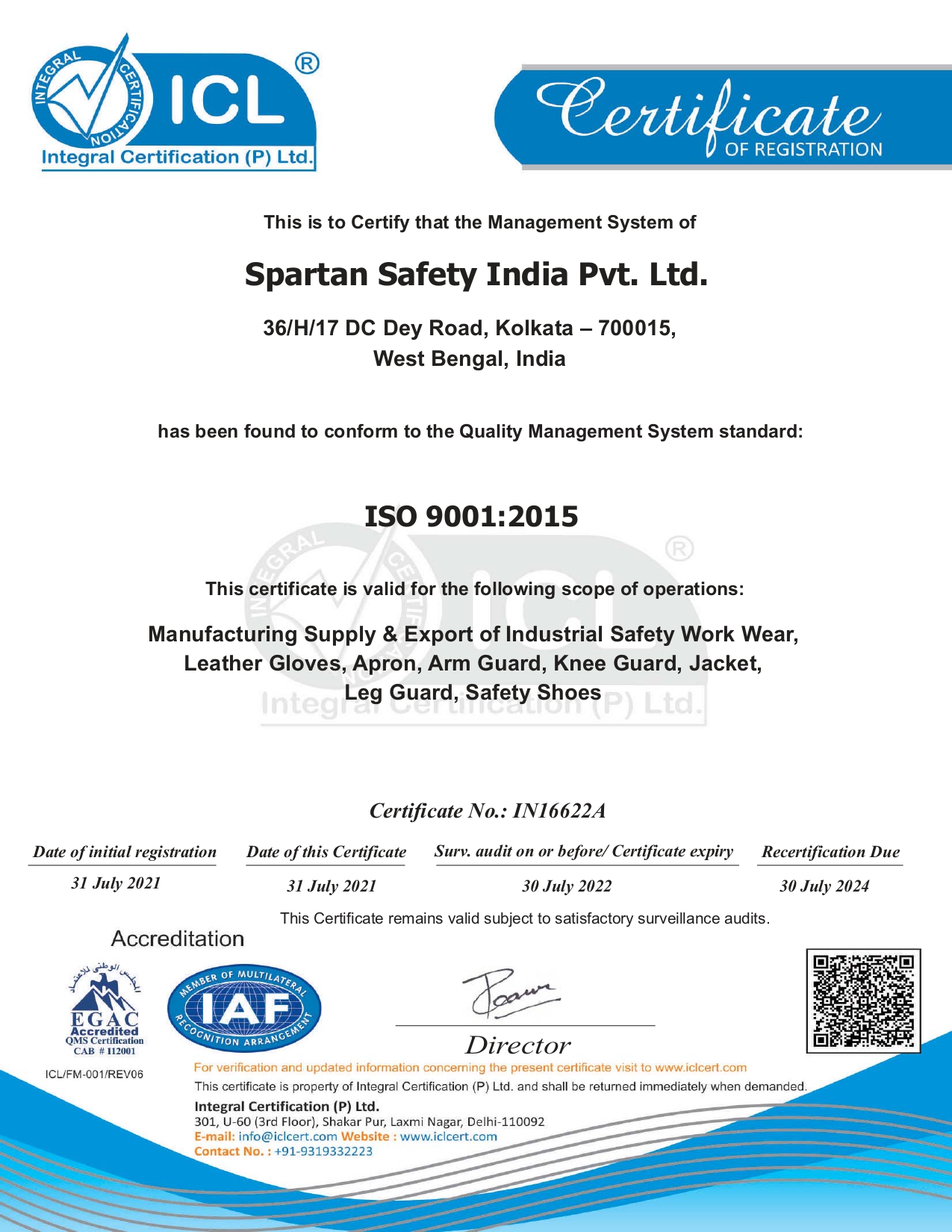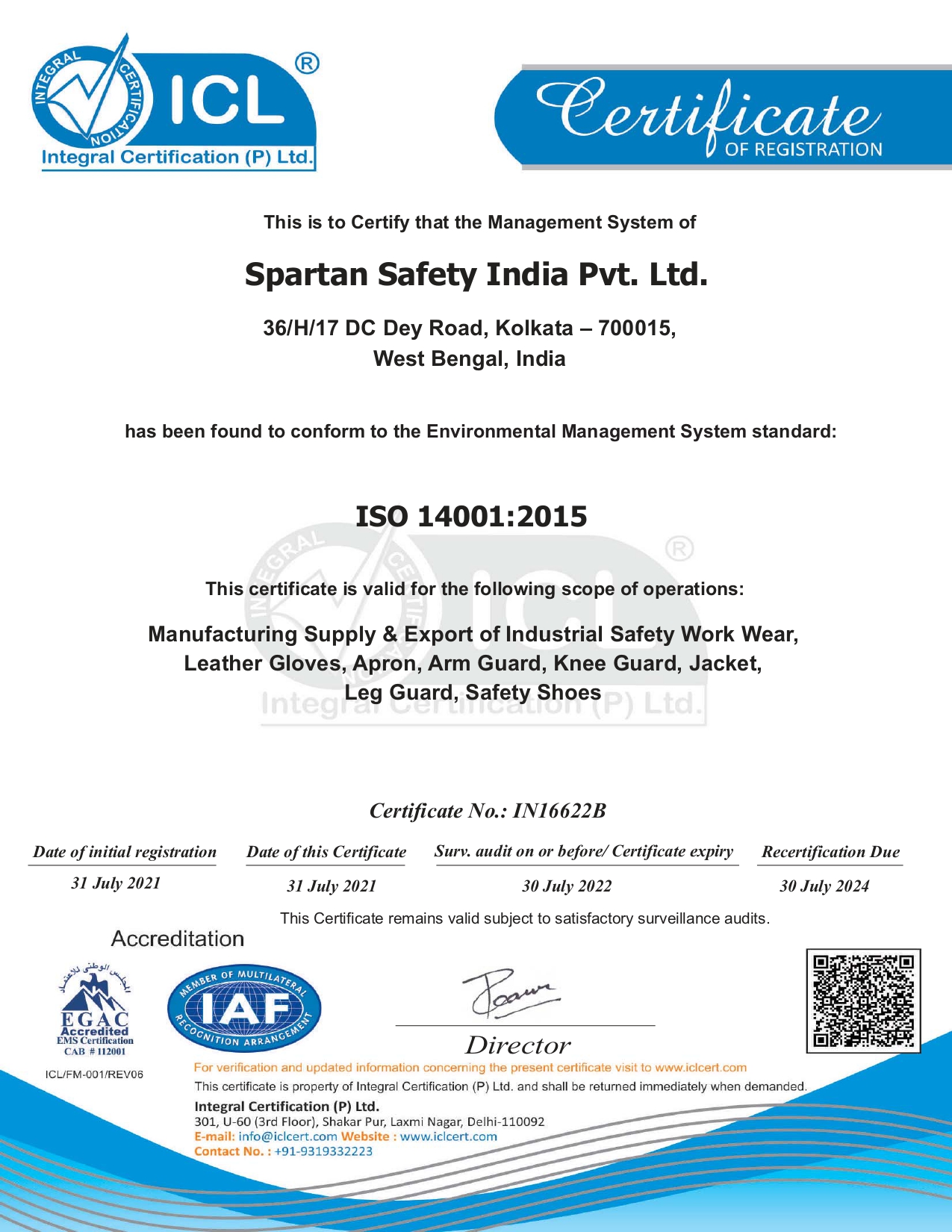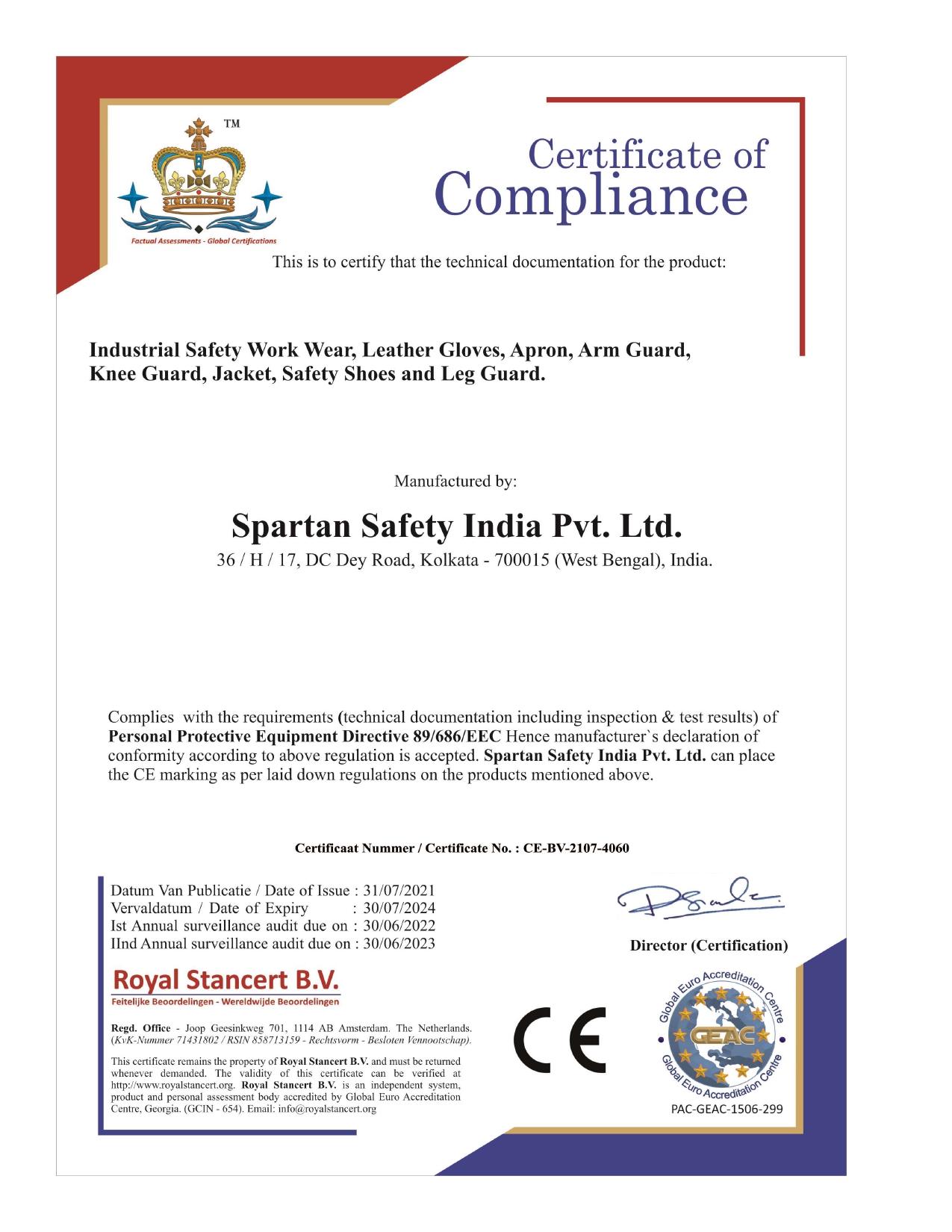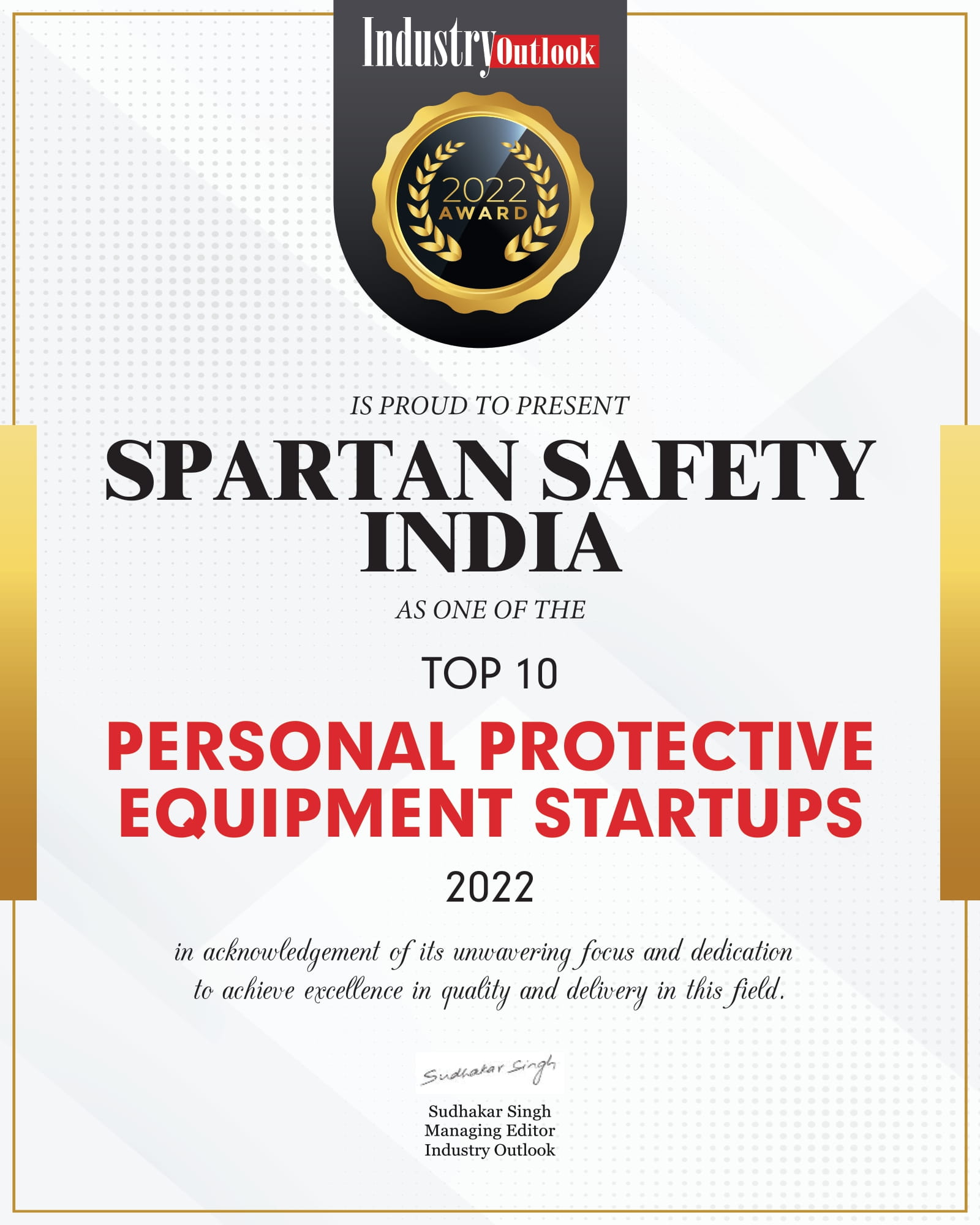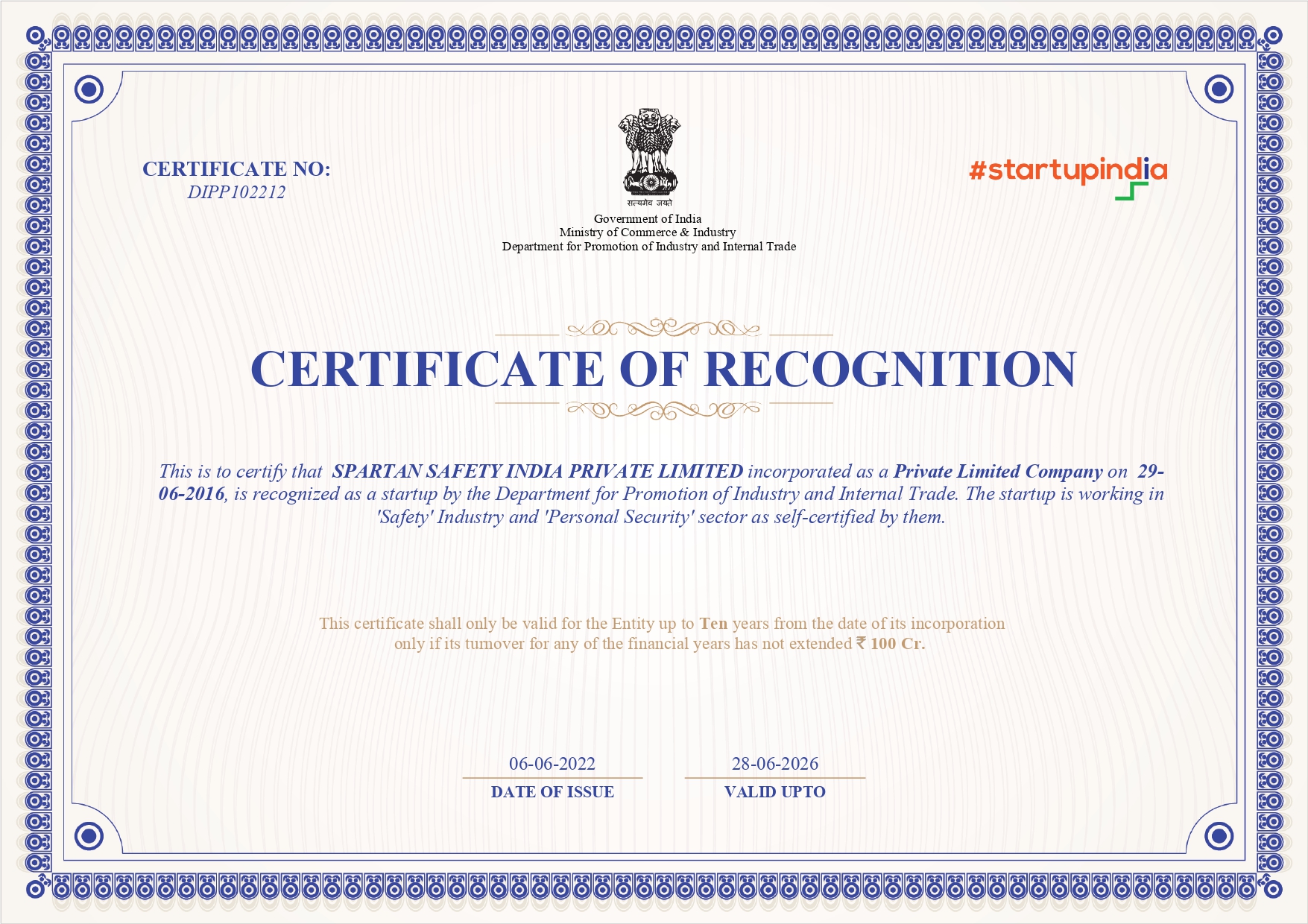 SPARTAN Safety India Private Limited
SPARTAN Safety India Private Limited
 SPARTAN Safety India Private Limited
SPARTAN Safety India Private Limited

In February 2016, the European Council and European Parliament amended and approved a new PPE Regulation proposed by the European Commission. This New PPE Regulation will replace the original PPE Directive 89/686/EEC that was introduced in 1992. The new Regulation will now apply to private use as protection against heat (e.g., oven gloves) and to distributors selling PPE products. It provides additional conformity assessment requirements, such as the need for an internal production control system and valid Type-examination certificates for a maximum of 5 years. The Regulation also provides specific requirements for every economic operator involved in the supply chain, as well as additional documentation requirements linked to the Instructions for Use and Conformity Declarations.
The new PPE regulation now specifies three classes based on risk definitions. PERSONAL PROTECTIVE EQUIPMENT DIRECTIVE 7 Complying with New PPE Regulation

Category I: Minimal Risk For gloves of simple design offering protection from low level risks, (e.g., janitorial gloves) manufacturers are permitted to test and certify gloves themselves.
Category II: Risks other than those listed in Categories I and III PPE designed to protect against intermediate risk (e.g., general handling gloves which require cut, puncture, and abrasion protection) must be subjected to independent testing and certification by a notified body. Only these approved bodies may issue a CE mark. Without a proper CE mark the gloves may not be sold or used. Each notified body has its own identification number. The name and address of the notified body that certifies the product must appear on the Instructions for Use that will accompany the gloves.
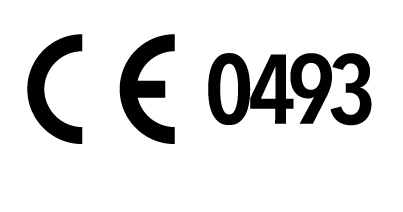
Category III: Very serious risks, which may cause death or irreversible damage to health PPE designed to protect against the highest levels of risk (e.g., chemicals, biological agents, electric shock and live working) must also be tested and certified by a notified body. In addition, the quality assurance system used by the manufacturer to guarantee homogeneity of production must be independently checked. The body carrying out this evaluation must also appear on the Instructions for Use and be identified by a number that appears alongside the CE mark, in this case the number is 0493.
Scope: This standard defines the general requirements for glove design and construction, innocuousness, comfort, efficiency, marking, and information applicable to all protective gloves.
Definition: A glove is an item of personal protective equipment that protects the hand or any part
of the hand from hazards. It may also cover part of the forearm and arm. Performance levels show how a glove
has performed in a specific test, and by which the results of that testing may be graded. Level 0 indicates
that the glove is either untested or falls below the minimum performance level. Higher numbers indicate higher
levels of performance. A performance level X means that the test method is not suitable for the glove sample.
Requirements: Glove construction and design
Cleaning Instructions: If care instructions are provided, the levels of performance should not be reduced after the maximum recommended number of cleaning cycles.
Electrostatic Properties
Water Vapour Transmission and Absorption:
Marking & Information Marking of the glove:
Instructions for use:
Glove Sizing Chart: Correct sizing is essential for ensuring glove comfort. The ideal way to determine glove size is with a dressmaker’s cloth tape. Use it to measure the circumference of the palm of the hand at its widest point (in mm or in inches). Cross reference that measurement against the table provided here. Measuring hands in this manner will not account for all possible variations in hand size. For instance, the length of a worker’s fingers may be longer or shorter than average. In that case, gloves that are one-half or even a full size larger or smaller than the measured hand size may fit more comfortably


Scope: This standard applies to all kinds of protective gloves in respect of physical and mechanical aggressions caused by abrasion, blade cut, puncture, and tearing.
Definition & Requirements: Protection against mechanical hazards is expressed by a pictogram followed by four numbers (performance levels), each representing test performance against a specific hazard, and two letters. The letter in the fifth position corresponds to an ISO Cut Resistance level. A letter “P” in the sixth position is for gloves certified to provide impact protection.
The ‘mechanical risks’ pictogram is accompanied by a 6-unit code (a-f).
Performance Level Rating
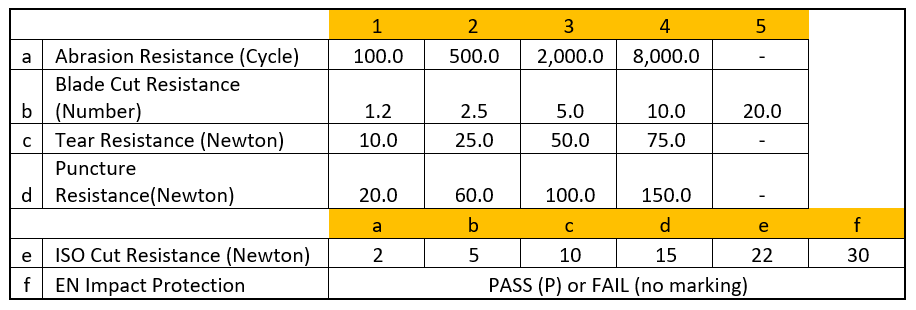
Level X can also be applied for a – f above, which means “not tested” or “not applicable
These performance levels must be prominently displayed alongside the pictogram on the gloves and on the packaging that immediately contains the gloves.

Gloves giving protection from heat and/or fire hazards
Scope: This standard specifies thermal performance for protective gloves against heat and/or fire.
Definition & Requirements: The ‘heat and flame’ pictogram is accompanied by a 6-digit number:
All EN407-rated gloves must also achieve at least performance level 1 for abrasion and tear

Gloves giving protection from manual metal welding
Scope: This standard applies to protective gloves for use in manual metal welding, cutting, and allied processes.
Requirements: EN12477: Protective gloves for welders Standard for manual metal welding
Compliance with EN420 except for lengths:
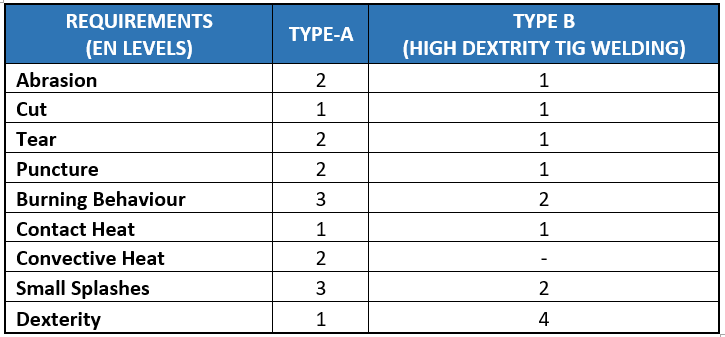
Type B gloves are recommended when high dexterity is required (e.g., TIG welding),
while Type A gloves are recommended for other welding processes. Type A or B is to
be marked on the product, its packaging, and in the instructions for use.
